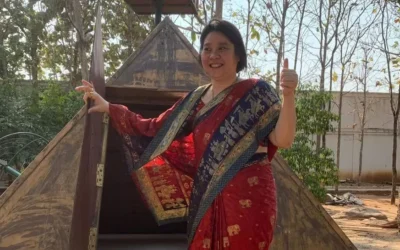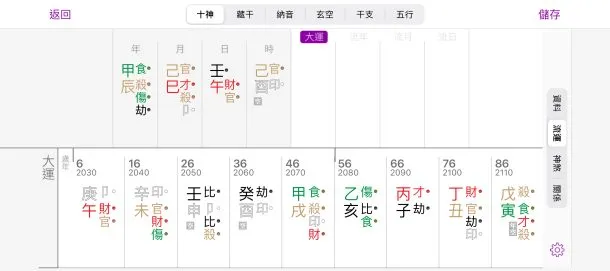Time for one of my favourite topics that never fails to get me incensed. Annual. Zodiac. Forecasts. I think a corgi dies each time I have to utter these three words.
Whenever we think of annual zodiac forecasts, it’s always about zodiac signs, Fan Tai Sui, and this person we call the Grand Duke, which is actually the Tai Sui, which no one knows is Jupiter. Everyone wants to know whether their animal sign gets screwed over by the Grand Duke. No one cares about what Chinese New Year means anymore – people want to get rich, and not get an enormous butthole from the Tai Sui.
It’s been a while since I spoke about Chinese New Year, the zodiac signs, and our favourite – annual zodiac forecasts. It’s not something I particularly enjoy blogging because of how silly it is even to have to talk about it, but I figured it’s a good time to revisit the topic again and perhaps add on different layers. It’s also a good idea to revisit what’s happening in the industry at the beginning of each year and update everyone on the latest trends, gimmicks, and scams.
We obviously care a lot about Chinese New Year, not just because it’s a time for family, remembering our blessings, and the receiving (and giving, for most of us) of red packets, but because every new year brings a different season of fortune and misfortunate for all of us. Some of us welcome the new year with hope, while others await in trepidation. We all want the upcoming new year to be the new year where everything changes for us. If everything is indeed a cycle of Yin and Yang, and it is as explained in many of my blog posts, there will always be a turning point somewhere when our lives drastically change – for better, or worse.
As important as Chinese New Year is, it’s a pity that most people know so little about its origins, significance, and what it has to do with Chinese astrology. Using zodiac forecasts to tell how the year will go is as good as trying to get your future read through a colonoscopy because the kind of information you get is the same – irrelevant and useless.
Yes, your zodiac sign and BaZi chart can tell you how a year will go, but this requires a complete in-depth deciphering of one’s chart. I don’t understand, and probably will never understand, why people believe in annual zodiac forecasts they see on billboards, TV shows, and just about any form of media.
Yes, granted that this poison that is annual zodiac forecasts is what the market and masses want, but we would all agree that people often don’t know what’s good for them. It’s like fast food. You know it isn’t good, but people still want it.
This post aims to further add to the topic of what the Tai Sui is and what it means to Fan Tai Sui, but I wish to also talk about how everything even came about and some of the history behind it. I feel that the more people appreciate how everything came to be, the better they are at discerning what’s good for them and what’s not. I need to reiterate the importance of this because there’s always a group of people each year making lousy life decisions based on some zodiac forecast they saw somewhere, and it leads to irreversible, dire consequences.
This post will touch on some of the key things we ought to know about Chinese New Year, its origins, and the practice and pitfalls of zodiac forecasts. It’s not as in-depth or technical as I would like it to be (because the post will never end if I go all out with technicals and history). It should be enough to make people more aware of the pitfalls of blindly believing myths perpetuated by media or practitioners who have no principles.
I hope everyone will grow to appreciate the most important day for all Chinese and a bit of its history from an astrological perspective and ensure we don’t fall prey to misinformation. A good life always starts with good decisions, and good deicisions stem from knowledge and wisdom.
Origins Of Chinese New Year
Chinese New Year has been celebrated for more than three millennia. No one knows exactly when our ancestors started celebrating this festival, though. It is believed that it began in the Shang Dynasty (1600–1046 BC) when it was believed people started holding ceremonies to honour the gods and their ancestors.
As we all know, Chinese New Year is also known as Lunar New Year. Whereas any Chinese imbecile on the street will understand why it’s called “Chinese New Year”, most don’t know why it’s interchangeable with “Lunar New Year”. Chinese New Year is based on the “Lunar Calendar”, also known as the “Farmer’s Calendar”, which is why you’ll hear the term 农历新年 where “农” means farming and “历” means calendar.
The word “lunar” has significance because it concerns the type of calendar used. The calendar is perhaps one of the most overlooked and underrated inventions that lay the foundation of not just astrology, but an entire civilization’s survival. Different civilizations celebrate their version of a New Year because each has a unique calendar system to measure and reckon time, and the differences in the calendars are simply explained by the different geographies.
The reckoning of time was paramount because people wouldn’t know when to plant crops, harvest, and prepare for winter without it. In other words, without the calendar, everyone would be dead. We don’t appreciate such notions anymore because we are mostly sheltered from the elements in our homes, where heat and cold can be generated at a press of a button, and the responsibility of food production is left to others. Please remember that survival was a lot harder in the past.
Intuitively, the Lunar Calendar tracks the moon’s cycle and is vital to farmers because it is believed that moon cycles affect crops. The moon affects the tides on Earth, and it is believed that the moon’s gravitational pull during the full moon helps seeds and plants absorb more water, which will impact the crop’s yield.
As with all calendars, the Lunar Calendar has one core weakness: it cannot measure seasonal changes independently. This is where the Solar Calendar comes in. I will not go into the eras in which the two calendars were invented, but it is believed that both came into the picture in the Shang dynasty as well, which is why Chinese New Year’s origins began from then too.
We will talk a bit about the Solar Calendar because it has more traditional links to the Chinese zodiac and BaZI analysis, and we all know how much people love the Chinese zodiac whenever every Chinese New Year is here.
Understanding The Different Calendars
Calendars were developed by observing what’s happening in the cosmos – the Sun, moon, and stars. These were the only reference points we could use to reckon time, and by “reckon”, I mean to get a sense of how long a year, month, week, and day felt. We won’t be able to measure time unless we know what we’re measuring, and the repeated movement of the planets and stars gives us a sense of this.
We use Solar, Lunar, and Luni-Solar calendars, meaning they track the Sun, Moon, or both. The Chinese civilization utilised all three of them, naturally.
We take the calendar for granted because the world is unified in using the Gregorian calendar, and everything is digitalised now. Again, we need first to appreciate that people did not have smartphones back then to keep track of dates. Without the calendar, humanity would not have survived because we would not know when to plant crops, harvest them. We would also not have been able to anticipate the change of seasons.
The Chinese civilization had many calendar systems throughout history – you could basically see them as different versions of the Chinese calendar. That said, it does not veer away from the fact that it mostly tracks the Sun and Moon. The two main ones we hear of are the Solar Calendar and Lunar Calendar, which eventually got brought together to form the Luni-Solar Calendar, which is still in use today.
A good example of how these two different calendars are still part of our lives is seeing how people head to the temple during the 1st and 15th day of the lunar month, based on the lunar calendar, where we gather together with the family during the winter solstice to have tangyuan, which is based the solar month.
What Is The Solar Calendar?
As its name suggests, the Solar Calendar is a calendar based on the ‘movement’ of the Sun. We all know the Sun doesn’t move, so the ‘movement’ we are talking about is the Sun’s apparent position relative to the stars and from our perspective on Earth. The keyword here is apparent, and the path of the Sun is known as the ecliptic, or 赤道 in Chinese.
The above image is what is happening in space. As for what’s happening on Earth as we perceive the movement of the Sun, please refer to the image below.
Let’s be honest with each other. We generally don’t care whether the Sun appears to be in a different position throughout the year anymore, especially in Singapore. That said, for those in Singapore, even though we are near the equator, these natural phenomena still affect us because you’ll still notice different temperature changes throughout the year.
Our ancestors bothered to track these seemingly pointless things because it did have a huge impact on life on Earth, and it also strengthened their knowledge of astronomy, laying the foundation for astrology. The fact that the Sun is at different parts of the sky makes it clear that the Earth is tilted and doesn’t move in a perfect circle, and all this knowledge is required for the development of astronomy and astrology.
A well-known feature of the Solar Calendar is the 24 Solar Terms or ‘jie qi‘ (节气). Understanding the solar terms is important for anyone interested in astrological techniques like BaZi and Qi Men Dun Jia divinations.
What Is A Solar Term?
Imagine Solar Terms as different points on the Earth’s orbit around the sun, and there are 24 of them to mark the changing of seasons. Each Solar Term has cultural and astronomical significance as observable changes in nature and physical phenomena can be observed when each Solar Term arrives.
As the Earth orbits around the Sun, it moves into different positions marked by the 24 Solar Terms. Each point of the solar term is marked 15° apart along the ecliptic.
Each solar month has two solar terms, and naturally, the 24 Solar Terms in the 12 months we go through each year complete one cycle. The 24 solar terms are:
- Beginning of Spring
- Rain Water
- Insects Awakening,
- Spring Equinox
- Fresh Green
- Grain Rain
- Beginning of Summer
- Lesser Fullness
- Grain in Ear
- Summer Solstice
- Lesser Heat
- Greater Heat
- Beginning of Autumn
- End of Heat
- White Dew
- Autumnal Equinox
- Cold Dew
- First Frost
- Beginning of Winter
- Light Snow
- Heavy Snow
- Winter Solstice
- Lesser Cold
- Greater Cold
We don’t usually care about Solar Terms anymore other than the occasional festival or cultural activity we participate in. However, an in-depth understanding of the Solar Terms is required for anyone practising Chinese astrology because the Solar Terms determine how charts are plotted.
Why Do We Need A Luni-Solar Calendar?
The perfect calendar system will ensure that two celestial events will always line up and be in sync:
- Seasonal changes
- Earth completes a full revolution around the Sun and returns to the same point.
No stand-alone calendar in the world can keep track of the two celestial events above, which is why the calendars we use in the modern day are usually two types of calendars combined into one, or some adjustments have to be made from time to time. Everything is made infinitely more complex because Earth’s orbit around the Sun is not a perfect circle, and there is also this extremely annoying thing called axial precession, where the axis on which Earth rotates tilts.
The two calendars we hear of the most are the Gregorian calendar we use daily, and the Luni-Solar Calendar, which our Chinese roots are related to. As the name suggests, the Luni-Solar Calendar is a combination of the Solar Calendar and the Lunar Calendar.
The spirit in which the Luni-Solar Calendar was developed is similar to that of the Gregorian Calendar, which is to make up for the inherent flaws in calendar systems.
The Gregorian Calendar is a refinement of the Julian calendar. The Julian calendar is where we got the saying “Earth takes 365 and 1/4 days” to revolve around the Sun, and we many of us in Singapore would remember we studied this in primary school when we were 10.
Pope Gregory XIII introduced the Gregorian Calendar to account for the drift of seasons because, by Pope Gregory’s time, the Julian Calendar had already regressed by 14 days due to the fact that a solar year is not 365.25 days, but days, 5 hours, 48 minutes, 45.25 seconds to be precise. Also, Gregorian Calendar… Gregory? Noticed anything?
Do note that what I said is that the spirit of the Gregorian and Luni-Solar calendar are the same, but the fact is, they aren’t the same, practically speaking.
The spirit of the Luni-Solar Calendar is similar because the Lunar and Solar Calendars make up for each other’s inherent flaws. The Solar Calendar can keep track of the change of seasons, which the Lunar Calendar can’t. On the other hand, the Lunar Calendar remedies the issue of precession, Earth’s gyration of the rotation axis, and the fact that a Solar Year regresses as time passes.
Combining both the Solar and Lunar calendar gives us an idea of what one “one true year” feels like to the Chinese, but it needs to be stated that it is still not a perfect calendar to use because it is that hard to keep track of what’s going on in the cosmos.
An astrologer should know how calendar systems are developed because if you don’t, you will never be able to appreciate how the charts are plotted, and how astrology was even developed.
Why Does Chinese New Year Land On Different Days Each Year?
The answer to this is intuitive. If I wanted to be a mean prick, I would say this is common sense, but let’s not be mean. The Chinese New Year we celebrate is based on the Lunar Calendar, which is a fundamentally different system of tracking time.
The Solar Calendar has about 365 days, whereas the Lunar Calendar has around 354 days. But we know for a fact that Chines New Year does not get earlier and earlier with each passing year despite the Lunar Calendar having fewer days. Why?
This is because of the Leap Month in the Lunar Calendar.
An additional Lunar Month is added to sync both calendars into a unified one. A “Leap Month”, which we call 闰月 (rùnyuè) in Chinese. The “Leap Month” changes each time because the regression of the Lunar Calendar would start at different points, which is why in some years, you could have an extra first Lunar Month for a given year, and the sixth Lunar Month in another year. This requirement to add a Leap Month is perhaps the greatest flaw in the Luni-Solar calendar, but it’s not like we have a choice anyways.
People love to freak out when the Leap Month falls on a lunar 7th month which we call know is the Hungry Ghost month, and people behave as though the ghosts and spirits have an extra month of holidays.
This is just trivia: Each time I catch up with friends and the topic of why there is an extra month that year, especially if it’s a lunar 7th month, I would basically just tell them to STFU and go to my blog because it’s mental torture to be repeating the same thing all the time. They ask me because of the nature of my job.
Why Understanding The Calendar Is Important
Simple.
All Chinese astrological techniques require an in-depth understanding of how the calendar works because the formulae for plotting any BaZi, Zi Wei Dou Shu, and even Qi Men Dun Jia chart are based on these very calendars we use.
You will always hear of Solar Terms in BaZi and Qi Men Dun Jia, where Zi Wei Dou Shu has more links to the lunar cycle.
Whereas not understanding how the calendar developed may not affect a practitioner’s ability to decipher a chart, I personally feel that an astrologer that takes pride in his or her work will wish to find out at least how our ancestors developed astrology. One thing of paramount importance is that there will come a time when the formula used for plotting charts needs to be updated, so understanding the steps behind how a calendar is developed is important for future generations of Chinese astrologers.
What Is Tai Sui Or The Grand Duke?
The Tai Sui, or Grand Duke, is Jupiter. As a layman, that’s all you need to know. This mysterious figure who conjured up an image of an old man with a horse-tail whip is actually a planet.
Jupiter may not mean much to the average person or layman, but to an astrologer, Jupiter is one of our favourite things to talk about. In the context of our discussion, Jupiter plays
an important role in reckoning time. There are 12 zodiacs because Jupiter takes around 12 years to orbit the Sun, hence forming a cycle. It is part of our celestial clock to let us measure and know what 12 years feels like. As for how a year, month, or week feels like is another point of discussion, which I have done in one of my really old blog posts. To recap: the movement of the Sun, Moon, the Big Dipper, and Jupiter, all come together to let us know how time feels like. They are all building blocks of the celestial clock.
For example, we know one day is when the Sun rises and then proceeds to f*** off because you can get a nice tan. How about a month, then? You look at the Moon waxing, and then taking its own sweet time to f*** off. How about a season? You look at the Big Dipper, which is never going to f*** off.
Of course, the above is not the best way to put things, but you get my point. The calendars we use are nothing but a reflection of what’s happening above.
Traditionally, Jupiter has played a significant role in all forms of astrology. It’s known as the Great Benefic in Vedic and Western astrology as it bestows gifts, knowledge, and children, and signifies abundance in general. Jupiter is not a planet to be taken lightly. It. is a venerated planet in all forms of astrology, and whether it’s in an exalted or debilitated position in your chart is going to make a huge difference in the quality of your life.
What Exactly Are The 12 Zodiac Signs?
We were taught as children that the 12 zodiac signs appeared when the 12 animals had a mythical race to choose the guardians of each year. They are the rat, ox, tiger, rabbit, dragon, snake, horse, goat, monkey, rooster, dog and pig.
As delightful as it may be to believe that 12 animals did race, the 12 zodiac signs are just another way of portraying the 12 Earth Branches, which are Zi, Chou, Yin, Mao, Chen, Si, Wu, Wei, Shen, You, Xu and Hai. The 12 Chinese zodiac signs and 12 Earth Branches are always referring to the same thing, and are technically interchangeable. Most astrologers will stick to using the astrological names of the 12 Earthly Branches instead of the names of the animals.
The simplest way of understanding the 12 zodiac signs Or Earthly Branches is to see it as an ordering system, and it was first built by using observations of the orbit of Jupiter. The Tai Sui, or Grand Duke, that you hear of every Chinese New Year refers to the planet Jupiter, or Sui Xing (岁星).
The reason why these seemingly boring and technical details are important is that these are building blocks of our calendar.
What’s The Difference Between Zodiac And Horoscopes
I need first to clarify that the words “zodiac” and “horoscopes” are not supposed to be used interchangeably and are different. It’s a bad habit to use them like that as it doesn’t help in our understanding of what they mean.
A horoscope is an astrological map, hence the word “scope” within it. It is a snapshot of the celestial sky at a given time. The twelve Zodiac signs, represented by the different animals, refer to the 12 Earthly Branches (地支) we use in Chinese astrology. The zodiacs signs and the animals used are just nominal markers to mark out different positions in the sky from the perspective of Earth.
A horoscope, on the other hand, is a snapshot of the entire sky and where the planets are. Zodiac signs fall within a horoscope, and is building block of it.
Zodiac Signs & The Solar Calendar
When we’re born, we’re all assumed to have a zodiac sign assigned to ask. Most people think the year’s zodiac sign changes when Chinese New Year is here, which is incorrect.
Zodiac signs fall under the umbrella of the Solar Calendar, not the Lunar Calendar.
One’s zodiac sign changes the moment the solar term 立春 is here because the zodiac sign system on which BaZi is based was developed using the solar calendar.
Taking 2024 as an example: 2024’s Lunar New Year falls on 12th February, and most people would assume people born on or after 12th February 2024 would be under the Dragon zodiac, when the zodiac sign assigned to a person would have already changed on 4th February when 立春 arrives.
Zodiac signs are not a lunar calendar concept. It is based on the solar calendar. Lunar New Year has nothing to do with the changing zodiacs. This astronomical fact is so unbeknownst and foreign to most people that some individuals live their lives thinking they’re of another zodiac sign.
2024’s Zodiac Sign – Wood Dragon (甲辰)
2024 is the year of the Wood Dragon, represented by the Pillar 甲辰。 For the uninitiated, 甲 is the Stem (天干), and 辰 is the Branch (地支). Together, they form what Chinese astrologers call a Pillar (柱), which we use in the sexagenary cycle (六十甲子).
For lay people, Zodiac signs are a way to understand our fortune for a particular year. But few understand the real purpose it serves.
As mentioned, the 12 Branches are nominal markers. So think of them as cones placed in space to mark out different positions. Position of what? That would be Jupiter. However, Branches alone are not enough to track everything, which is why we also have the Heavenly Stems (天干)。
The 10 Heavenly Stems and 12 Earthly Branches come together to give a more precise measurement of the cosmos. Your zodiac sign is just a small building block in the system of measuring the movement of the planets. For example, 2024’s 甲辰 year means Jupiter would be in the 辰 sector, which is the east-southeast direction from Earth’s point of view. If we were to bring in Western astrology, Jupiter would be in Aries, also considered East.
Each zodiac sign has five different ‘versions’, differentiated by the elements we use in Chinese metaphysics – Wood, Fire, Earth, Metal, and Water. In other words, after the year of the Wood Dragon would be the Fire Dragon (丙辰) in another twelve years’ time, and Earth (戊辰), Metal (庚辰), and finally, Water (壬辰).
The elements appearing on the Stems profoundly impact everything, so don’t be mistaken that the years will feel the same just because the Branches are similar. This is just trivia, but certain types of Dragons have a chance of falling under special category of auspicious BaZi charts, but I’ll leave that for another time.
Zodiacs That Fan Tai Sui In 2024
Your zodiac sign is basically represented by the Year Branch in your BaZi chart, and whether your will Fan Tai Sui or not depends on that particular year’s Branch and how it interacts with it.
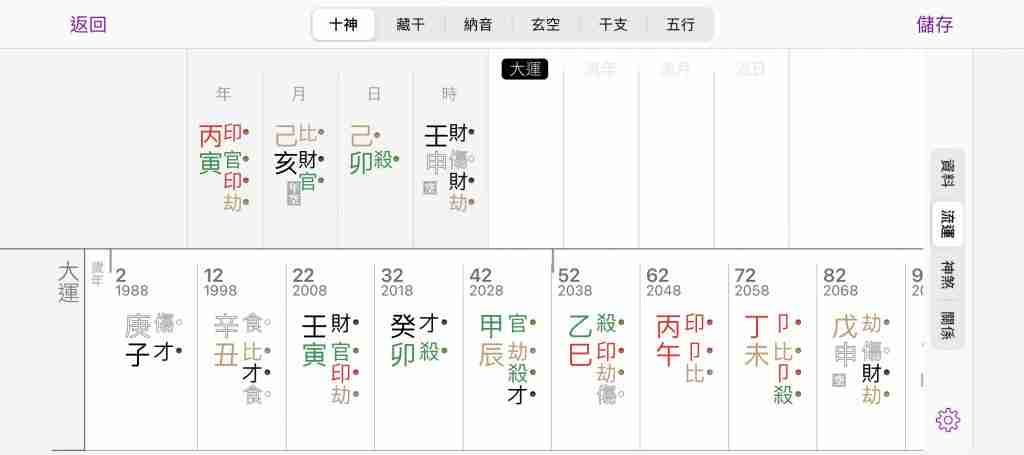
If you look at the chart above: The column marked by “年”, the Year Pillar, indicates the year one was born. The above chart shows 丙寅 made up of Yang Fire 丙 and Yang Wood 寅。It is the year of the Fire Tiger, meaning 1986. The character at the bottom, which in this case is ‘yin‘ (寅), representing the Tiger, is the Year Branch (年支) that determines your relationship with the Tai Sui in a particular year.
The zodiacs that Fan Tai Sui in 2024 are the Ox, Rabbit, Dragon, and Dog.
The animal signs that Fan Tai Sui in any given year is basically how a given year’s Earth Branch affects one’s zodiac sign. To illustrate, 2024’s Year Of The Dragon is represented by the ‘chen’ (辰) Branch. Chen, in BaZi theory, interacts with other Branches, and the animal signs that are supposedly negatively interacted with are the signs that will Fan Tai Sui. There is a reason why I used the word “supposedly” here, so read on.
To illustrate further:
- Ox will have a “Break” (破) relationship with 2024’s Dragon (丑辰破)
- Rabbit will have a “Harm” (害) relationship with 2024’s Dragon (卯辰害)
- Dragon will have a “Punishment” (刑) relationship with 2024’s Dragon (辰辰自刑)
- Dog will have a “Clash” (冲) relationship with 2024’s Dragon (辰戌冲)
Before anyone jumps to conclusions and expects me to go into how each zodiac will be affected, please hold your horses. I’m not going to do that because you cannot claim every single person under the same zodiac is going to have a similar year. This is only logical, and common sense.
Fan Tai Sui Years Can Be Auspicious
The word ‘fan’ or 犯 in Chinese generally means “offend”. People are worried about Fan Tai Sui years because it’s as though we’re fated to be punished. I need to point out that we use the term ‘Fan Tai Sui’ too broadly, causing a lot of misunderstanding with Chinese metaphysics and BaZi in general.
Yes, the energies of that year do not sit well with your zodiac sign, and a so-called Fan Tai Sui year usually ends up being more eventful, which is why people fear it so much.
Listen very carefully now. Your so-called Fan Tai Sui years can actually be auspicious, and the word ‘fan’ (犯) should only be reserved for people whose charts are genuinely affected by a particular year’s Tai Sui.
To illustrate, let’s take two people under the Dog zodiac, where it is technically a year where both of them clash with the Tai Sui or Grand Duke:
- For Person A, the clash between Dog and Dragon (辰戌冲) might be favourable.
- For Person B, the clash between Dog and Dragon might be catastrophic.
As such, strictly speaking, Person B truly offends the Grand Duke because the interaction is negative. As mentioned, we use the term ‘Fan Tai Sui’ too broadly and assume ‘Fan Tai Sui’ is merely an act is your Year Branch/zodiac sign being interacted with. This misunderstand needs to be addressed.
In other words, I wish to clarify that even though you might be under a zodiac sign affected for that year, you should not immediately assume it is an ‘offence’ per se. Why? Because a Fan Tai Sui year can be very auspicious, and it all depends on what your chart needs.
There are plenty of people out there having a fantastic year due to a clash with the Tai Sui – they just don’t bother to tell you about it because they’re having such a good time.
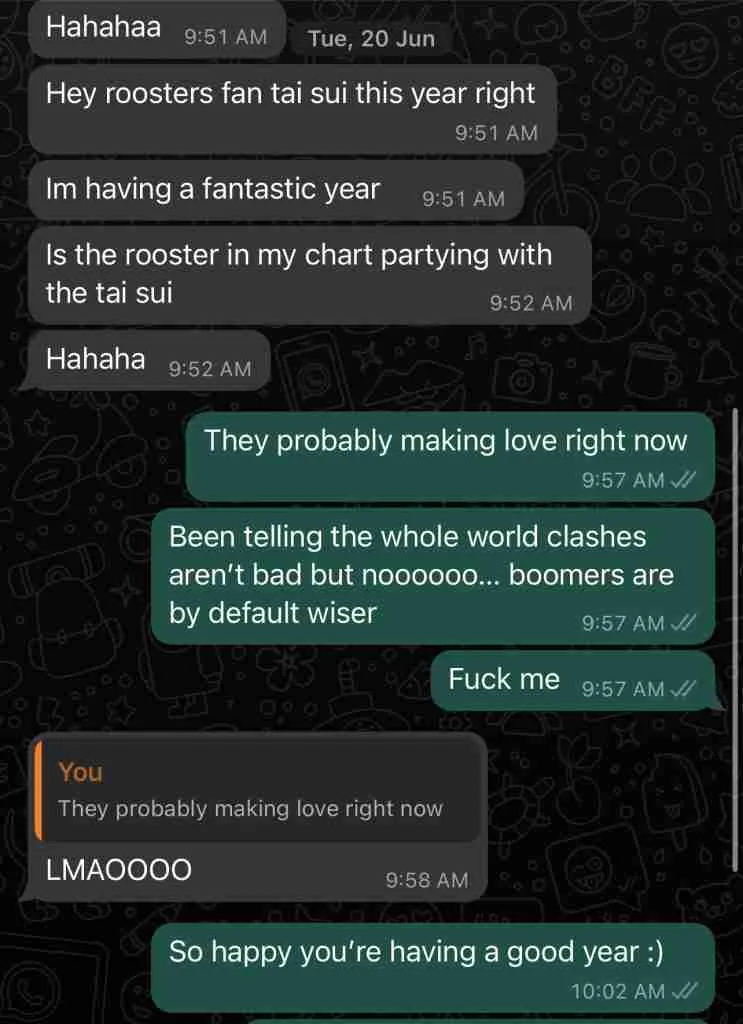
The four interactions I stated in the above section may sound like they a negative connotation, but the thing to remember about Chinese metaphysics is that the interactions are intrinsically neutral, and whether an interaction with a particular year’s Tai Sui is truly positive or negative depends on what the chart needs.
Let’s take people under the Dog zodiac, for example. Everyone fears the clash with 2024’s Tai Sui, but the point here is that the clash is not the primary concern – it’s what the clash does.
I don’t wish to put a case study for now for the sake of it. Just now clashes, and any form of interaction with the Tai Sui can swing both ways.
Non-Fan Tai Sui Years Can Be Disastrous
Now, on the opposite spectrum of clashing with the Tai Sui or Grand Duke would be being in ‘harmony’ with the Tai Sui, or what we call ‘He Tai Sui’ (合太岁)。
I need first to clarify that the Chinese term 合 should not be translated into “harmony” because the word “harmony” has an inherently positive connotation. Still, in essence, the Chinese terms we use are always neutral. ‘He’ (合) should be seen as being absorbed or having some form of a birth-death relationship.
2024’s Dragon is technically a ‘he tai sui‘ year for those born under the Rat and Monkey zodiac because of the Branch interactions they represent, such as ‘zi-chen‘ and ‘chen-shen‘ Water combinations (子辰合,辰申合).
Some people would assume one would have a good year just because one’s zodiac sign is of a ‘harmonious’ relationship with the Grand Duke. This is categorically untrue.
The easy way for me to put things across is this: Regardless of the kind of interaction one’s zodiac sign has with the Grand Duke, the outcome can always swing both ways. It’s just that the process of getting there is different. A year with a “clash” will always feel tiring because of the changes it brings; a year with “harmony” might represent being burdened instead of receiving help; and a year with “punishment” can either bring you to greater heights or destroy what you’ve built over the years.
Again, and I reiterate, the effects of the Tai Sui are dependent on what your BaZi chart needs – it cannot be determined simply by looking at the type of interaction. Clash, Harm, Bully, Break, Harmony – they all aren’t intrinsically good or bad. The good and bad come from assessing what it does to your chart.
Annual Zodiac Forecasts Are Irresponsible Nonsense
This is perhaps one of the most controversial things I’ve said as a Chinese metaphysics practitioner. Annual zodiac forecasts are inaccurate, stupid, and no different from a scam trying to punish for sales.
I’m not going to hold back here. Annual zodiac forecasts are created for stupid people who cannot think critically, so don’t be one of them.
There is absolutely no way for a practitioner to forecast someone’s year just using one’s zodiac sign. This topic is something I wrote about a long, long time ago. I initially wanted to write a post on this yearly nonsense but figured it would just be a waste of time. For a technical post on why annual zodiac forecasts are inaccurate and no different from a scam, please find this blog post I wrote a long time ago:
Please understand that annual zodiac forecasts serve no purpose other than to entertain. Annual zodiac forecasts, unfortunately, have spread so many myths and misconceptions that it has caused more harm than good.
For example, most people assume it’s very harmful if the Grand Duke clashes with your zodiac sign. That is completely false and misleading, and a severe misapplication of BaZi theory. I’ve said this right at the start, ten years ago, that any practitioner who who has pride in what he or she does should not be engaging in this because people end up making wrong life decisions because of this charade practitioners put up every year. The funny thing is, practitioners will now put disclaimers before given a forecast, like how YouTubers like to go, “This is not financial advice.” before the start of any video, as though it automatically exonerates them from blame.
Annual zodiac forecasts done without rigour are effectively doing this:
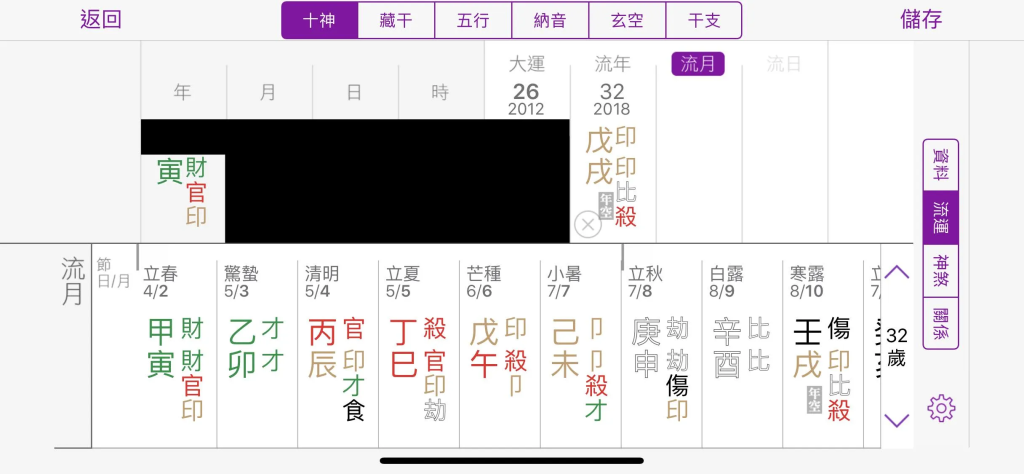
They cover up 90% of the chart, leaving only your Year Branch, representing your zodiac sign, for the practitioner to play around with and conjure a story of your year from thin air, but not before throwing a disclaimer that it is only 10% accurate. For Heaven’s sake, if something is only 10% accurate, you might as well don’t do it.
I hope you found this post useful for understanding Chinese New Year and its origins, and how the Chinese zodiac signs and BaZi are intertwined, at least culturally, with Chinese New Year.
Please always remember to approach BaZi and any form of astrology with rigour. Astrology can be extremely useful for us as it acts as a guide and tool for inner reflection. That said, before we get there, we need to put in some effort to discern what’s real and what’s not, and how to steer clear from some of the traps unwittingly set out by the media and ‘practitioners’ who want media exposure for the sake of it, and at your expense.
– Sean







